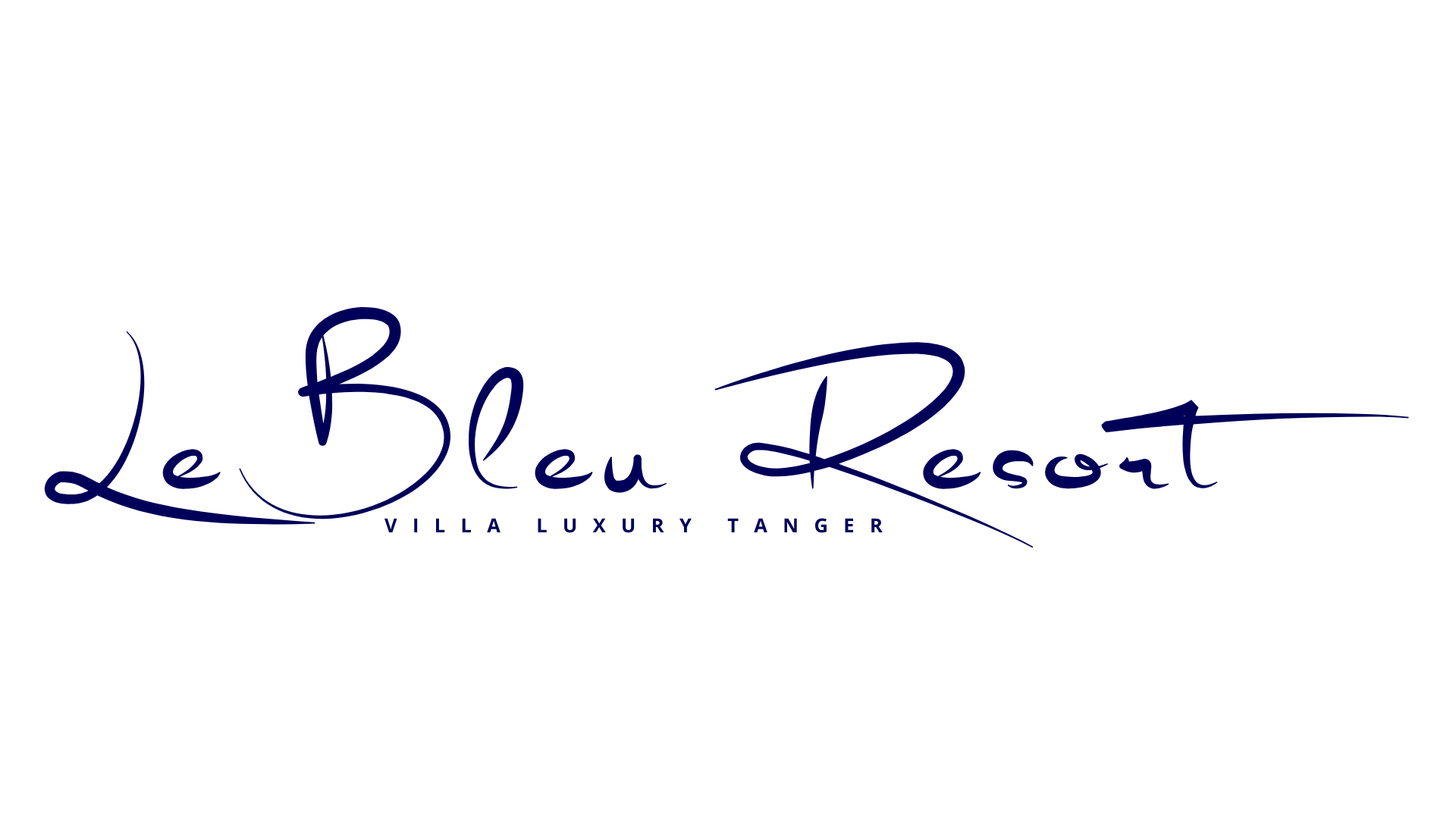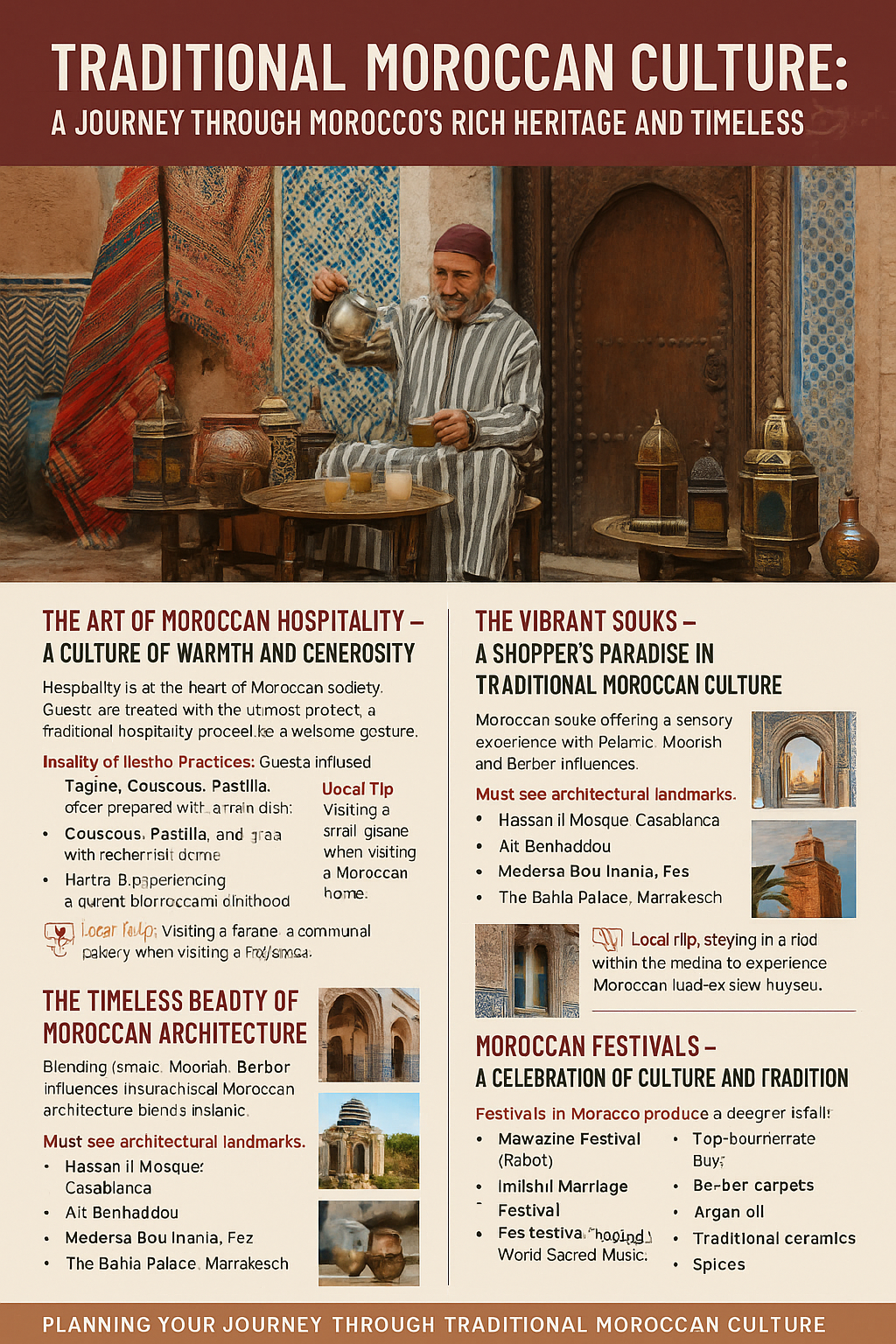Traditional Moroccan Culture: A Journey Through Morocco’s Rich Heritage and Timeless Traditions
Morocco is a country where history, tradition, and modernity blend seamlessly. From the bustling souks of Marrakech to the serene landscapes of the Atlas Mountains, every corner of the country tells a story. Its culture, shaped by centuries of Berber, Arab, and Andalusian influences, is deeply rooted in hospitality, artistry, and age-old traditional moroccan culture that continue to thrive today.
Visitors are drawn to Morocco not only for its breathtaking scenery but also for the richness of its customs. Whether it’s the warmth of a traditional tea ceremony, the craftsmanship of local artisans, or the vibrant sounds of Moroccan music, the country offers an immersive cultural experience unlike any other. This guide explores the essence of traditional Moroccan culture, from its iconic cuisine and architectural marvels to its timeless festivals and deep-seated traditions.
Don’t wait! Get the answers you need now by chatting with us on WhatsApp.
1. The Art of Moroccan Hospitality – A Culture of Warmth and Generosity
Hospitality is at the heart of Moroccan society. Guests are treated with the utmost respect, whether they are visiting a local home, a traditional riad, or even a roadside café. One of the most symbolic gestures of traditional moroccan culture hospitality is the mint tea ceremony.
Served in delicate glasses, this sweetened green tea is infused with fresh mint leaves and poured from a height to create a frothy top. This technique is not just for show; it aerates the tea, enhancing its flavors. Refusing a cup is considered impolite, as tea is a sign of welcome and friendship.
Traditional Hospitality Practices:
- Guests are often welcomed with fresh dates and almonds, symbolizing prosperity and kindness.
- Sharing a meal is a deeply social experience, often eaten from a communal dish using pieces of warm Moroccan bread.
- Visitors staying in a riad (a traditional Moroccan house with an interior courtyard) will experience the warmth of personalized service, often from families who have lived there for generations.
Local Tip:
When visiting a Moroccan home, a small gift such as pastries, nuts, or a decorative item is a thoughtful gesture that will be greatly appreciated.
2. Moroccan Cuisine – A Culinary Tradition Passed Down Through Generations
Food is an essential part of Moroccan culture, with flavors that reflect the country’s diverse history. A mix of Berber, Arab, Mediterranean, and Andalusian influences can be found in its dishes, each prepared with a unique blend of spices, fresh herbs, and slow-cooked techniques.
Iconic Moroccan Dishes to Try:
- Tagine: A slow-cooked stew of meat, vegetables, and spices, named after the clay pot in which it is prepared.
- Couscous: Traditionally served on Fridays, this fine wheat semolina dish is steamed and topped with vegetables, chickpeas, and tender meat.
- Pastilla: A flaky pastry filled with spiced meat (often pigeon or chicken), almonds, and cinnamon, offering a sweet and savory contrast.
- Harira: A rich tomato-based soup made with lentils, chickpeas, and fragrant spices, commonly eaten during Ramadan.
Where to Experience Authentic Moroccan Cuisine:
- Djemaa el-Fna, Marrakech: Street food stalls serving grilled meats, harira soup, and traditional snacks.
- Local Riads: Many riads offer home-cooked meals using recipes passed down through generations.
- Fez Medina: Known for some of the best authentic Moroccan restaurants hidden within its winding streets.
Local Tip:
For the freshest Moroccan bread, visit a local farane, a communal bakery where families bring their dough to be baked in traditional wood-fired ovens.
3. The Timeless Beauty of Moroccan Architecture in Traditional Moroccan Culture
Moroccan architecture is a reflection of the country’s diverse history, combining Islamic, Moorish, and Berber influences into breathtaking designs. Intricate tilework, carved plaster, and grand archways adorn everything from mosques and palaces to traditional homes.
Must-See Architectural Landmarks:
- Hassan II Mosque, Casablanca: One of the largest and most stunning mosques in the world, featuring an oceanfront setting and a towering minaret.
- Ait Benhaddou: A fortified Berber village made of mud-brick structures, often used as a backdrop for Hollywood films.
- Medersa Bou Inania, Fez: A 14th-century religious school showcasing exquisite zellij tilework and carved cedarwood details.
- The Bahia Palace, Marrakech: A masterpiece of Moroccan craftsmanship, with lush gardens and stunning mosaic interiors.
Local Tip:
Stay in a riad within the medina to experience Moroccan architecture up close. Many have been converted into boutique guesthouses with beautifully preserved interiors.
4. The Vibrant Souks – A Shopper’s Paradise in Traditional Moroccan Culture
Moroccan souks are a sensory experience, filled with the aromas of spices, the vibrant colors of handmade textiles, and the rhythmic sounds of artisans at work. These traditional markets are the best place to find handcrafted goods, from intricately woven Berber rugs to finely tooled leather products.
Top Souvenirs to Buy:
- Berber carpets: Handmade and naturally dyed, each rug tells a story through its patterns.
- Argan oil: A beauty essential, known for its nourishing properties.
- Traditional ceramics: Colorful pottery featuring Moroccan geometric designs.
- Spices: Saffron, cumin, and ras el hanout are staples of Moroccan cuisine.
Local Tip:
Bargaining is an essential part of shopping in Moroccan souks. Vendors expect negotiations, so start at half the asking price and work your way up with patience and a friendly attitude.
5. Moroccan Festivals – A Celebration of Culture and Tradition
Festivals in Morocco provide a deeper insight into the country’s traditions, music, and religious customs. These events bring communities together through dance, storytelling, and feasting.
Notable Moroccan Festivals:
- Mawazine Festival (Rabat): One of Africa’s largest music festivals, featuring international and local artists.
- Imilchil Marriage Festival: A unique Berber tradition where young men and women gather in hopes of finding a life partner.
- Fes Festival of World Sacred Music: A spiritual and cultural event that attracts artists from around the globe.
Local Tip:
If visiting during Ramadan, expect slower-paced days but vibrant evenings filled with traditional celebrations and feasting.
Planning Your Journey Through Traditional Moroccan Culture
Before traveling to Morocco, here are some key things to keep in mind:
Best Time to Visit:
- Spring (March-May) and Fall (September-November) offer the best weather for exploring cities and the countryside.
Cultural Etiquette:
- Modest dress is recommended, especially in rural areas. Women may find a scarf useful when visiting religious sites.
- Always greet with a handshake and a warm “Salam Alaikum” (peace be upon you).
Getting Around:
- Trains are reliable for traveling between major cities.
- Taxis and local guides are the best way to navigate the medinas.
Language:
- Arabic and Berber are the primary languages, but French is widely spoken, especially in urban areas.
Final Thoughts
Morocco’s rich cultural heritage offers a journey unlike any other. Whether exploring historic medinas, savoring traditional dishes, or immersing in centuries-old traditions, every moment reveals something unique. Traditional Moroccan culture is not just something to witness—it’s something to experience, feel, and become a part of.
Our team is here to assist you. Contact us on WhatsApp for more information.



